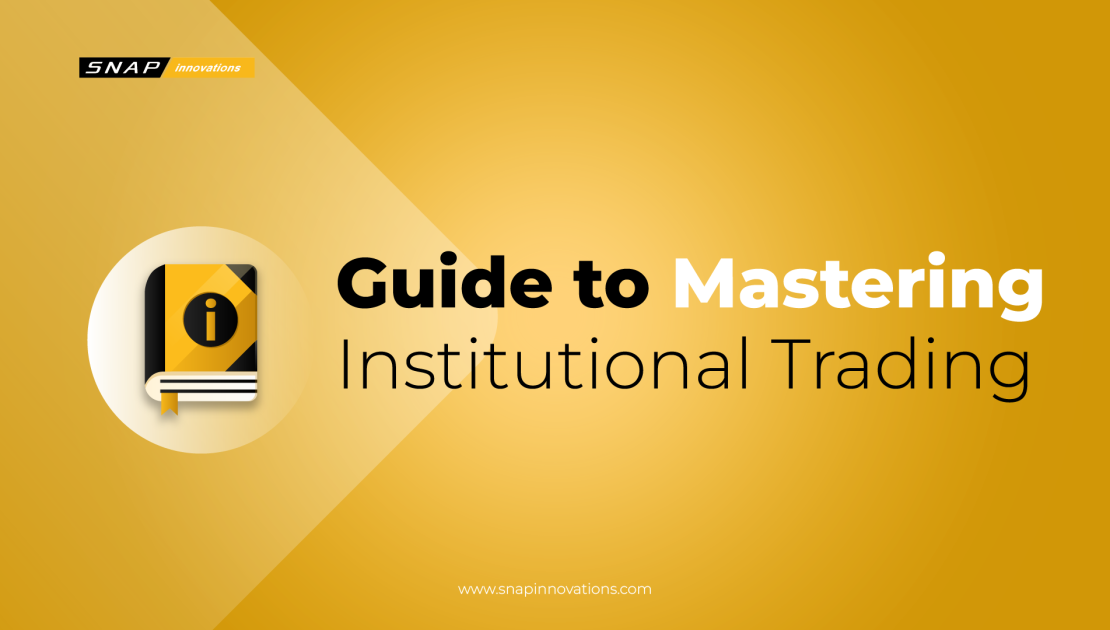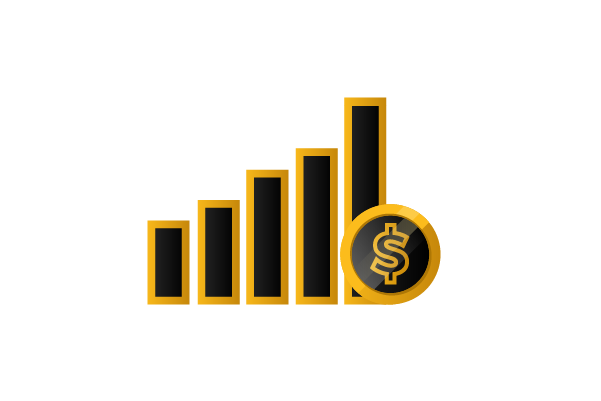Institutional trading isn’t just a buzzword thrown around in financial corridors; it’s a sophisticated, multi-faceted operation that drives a significant portion of the world’s trading volume. If you’ve ever been curious about what makes institutional trading tick, or if you’re considering the shift from retail to institutional, this comprehensive guide is tailor-made for you.
There’s more to institutional trading than meets the eye. It’s not just about large transactions and high-profile clients; it’s about strategic approaches, specialized tools, and a distinct market perspective. Join us as we demystify the realm of institutional trading solutions.
What is Institutional Trading Solution?
Institutional trading refers to the buying and selling of securities and financial instruments by institutional investors. These are the big players, like mutual funds, pension funds, and insurance companies, that manage massive amounts of capital. The solutions they employ cater to their unique trading needs, ensuring seamless transactions, lower costs, and efficient execution.
An institutional trading solution is more than just a platform. It encompasses software, strategies, and services that help these mammoth traders execute orders without causing significant market disruptions. Because when you’re trading in volumes that can run into millions or even billions, every move you make can potentially shift the market.
The main draw of these solutions lies in their advanced features and capabilities. They often integrate algorithmic trading, dark pools, and other complex tools to ensure the best possible outcome for their trades. Moreover, they offer a level of security and efficiency that typical retail trading platforms simply cannot match.
Examples of Institutional Trading Solution
 Institutional trading solutions can be categorized into several types, each serving a specific purpose. Here are some prominent examples:
Institutional trading solutions can be categorized into several types, each serving a specific purpose. Here are some prominent examples:
1. Algorithmic Trading Platforms
- What are they? These are cutting-edge software solutions that employ algorithms to execute trading orders. Rather than relying on human intervention, these algorithms can make split-second decisions based on real-time data.
- Benefits: They offer precision, speed, and the ability to handle vast amounts of data instantaneously. For institutions, they can help in reducing the cost of trade and improve the chances of executing at the best possible prices.
- Drawbacks: As they’re automated, unexpected market anomalies can sometimes lead to significant losses if not carefully monitored.
2. Direct Market Access (DMA) Platforms
- What are they? DMA platforms facilitate a direct route for institutions to place trades onto the stock exchange’s order books, bypassing intermediaries.
- Benefits: They provide a more transparent, faster trading experience. Institutions can view live order books, ensuring they get the most favorable prices.
- Drawbacks: Due to the direct nature of these platforms, they may require a higher degree of expertise to navigate and manage.
3. Order Management Systems (OMS)
- What are they? An OMS is an integrated software platform that facilitates and manages the order lifecycle. From the moment an order is initiated to its final settlement, the OMS tracks and organizes every step.
- Benefits: With built-in analytics, risk management, and real-time monitoring, OMSs offer institutions an unparalleled oversight into their trades, helping them make informed decisions.
- Drawbacks: They can be complex and might require thorough training to utilize efficiently.
4. Dark Pools
- What are they? These private exchanges or trading networks allow institutions to trade away from the public eye, shielding their activities from the broader market.
- Benefits: For large-scale trades, dark pools can prevent substantial market disruptions. By keeping trades confidential, they allow institutions to avoid adverse price movements.
- Drawbacks: The secretive nature of dark pools has sometimes attracted criticism for lacking transparency. There’s also the potential risk of price manipulation within these networks.
What Makes Institutional Trading Solution Unique?
 Institutional trading solutions stand apart from their retail counterparts for several reasons. First, they cater to the high volume and significant capital requirements of institutional traders. When you’re dealing with millions or billions, you need a system that can handle that volume without buckling.
Institutional trading solutions stand apart from their retail counterparts for several reasons. First, they cater to the high volume and significant capital requirements of institutional traders. When you’re dealing with millions or billions, you need a system that can handle that volume without buckling.
Secondly, they offer a depth of analysis and sophistication that retail platforms often can’t match. This includes access to more comprehensive data, advanced analytics, and superior risk management tools.
Finally, privacy and discretion are paramount for institutional traders. Solutions that cater to this demographic prioritize anonymity, ensuring that their trades remain confidential, especially when working with sizable positions. This level of discretion allows institutions to operate without prematurely influencing the market.
Institutional Traders vs. Retail Traders
The financial world is a complex ecosystem of different traders. The most distinct categories that we come across in this vast landscape are institutional and retail traders. Let’s delve deeper into the intricacies that set these two apart:
1. Scale and Volume
- Institutional Traders: These are the juggernauts of the trading world. Backed by massive financial institutions, they deal in trades that can run into millions or billions of dollars. Such sizable trades can influence market trends and dictate the direction in which the stock price might move.
- Retail Traders: These are individual investors, sometimes trading from the comfort of their homes or local brokerage firms. Their trade volumes are significantly lower, often not exceeding a few thousand or hundred thousand dollars. While they can collectively influence the market, a single retail trader’s trade seldom has a noticeable impact on stock prices.
2. Tools and Resources
- Institutional Traders: Their deep pockets allow them to invest in cutting-edge trading solutions, from sophisticated algorithmic trading platforms to direct market access systems. They also have teams of analysts at their disposal, providing insights based on comprehensive data analytics and research.
- Retail Traders: Their resources are more limited. They usually depend on retail brokerage platforms which, although advanced in their own right, don’t offer the same depth or range of analytics. Most retail traders rely on public news, basic charting tools, and sometimes paid subscription services for their research.
3. Market Impact
- Institutional Traders: Due to the enormous size of their trades, they can significantly shift supply and demand dynamics, influencing market prices. This is particularly evident when they employ strategies like block trades or when they move in and out of positions in less liquid markets.
- Retail Traders: Their trades are relatively small, so their direct impact on market prices is minimal. However, in the age of social media and collective trading movements, groups of retail traders can sometimes band together to cause noticeable market shifts.
4. Regulation and Oversight
- Institutional Traders: They operate under a microscope. Regulatory bodies closely monitor their actions to ensure market fairness and transparency. They’re required to disclose their holdings, trading activities, and more. This level of scrutiny is designed to protect individual investors and maintain the integrity of the financial markets.
- Retail Traders: While they still operate within a regulatory framework, they face fewer reporting requirements and disclosures. This offers them a degree of flexibility in their trading strategies. However, it also means they have to be more self-reliant in terms of due diligence and risk management.
5. Knowledge and Training
- Institutional Traders: Many have formal education in finance, years of on-the-job training, and access to continuous learning resources. Their decisions are often data-driven, backed by research from experts in specialized fields.
- Retail Traders: Their backgrounds vary widely. Some might be well-versed in the intricacies of the market, while others might be novices. Access to learning resources can be limited, and while many strive to educate themselves, they might not always have the same depth of knowledge as their institutional counterparts.
Conclusion
The world of institutional trading is vast, complex, and undeniably fascinating. As we’ve discovered, institutional trading solutions offer an advanced suite of tools designed to meet the unique needs of the industry’s titans. While retail traders operate on a different scale, understanding the intricacies of institutional trading can offer valuable insights into the broader market’s dynamics.
Whether you’re an aspiring trader, a finance aficionado, or simply curious, we hope this guide shed light on an often-misunderstood segment of the trading world. After all, in the fast-paced realm of finance, knowledge is your most valuable asset.



